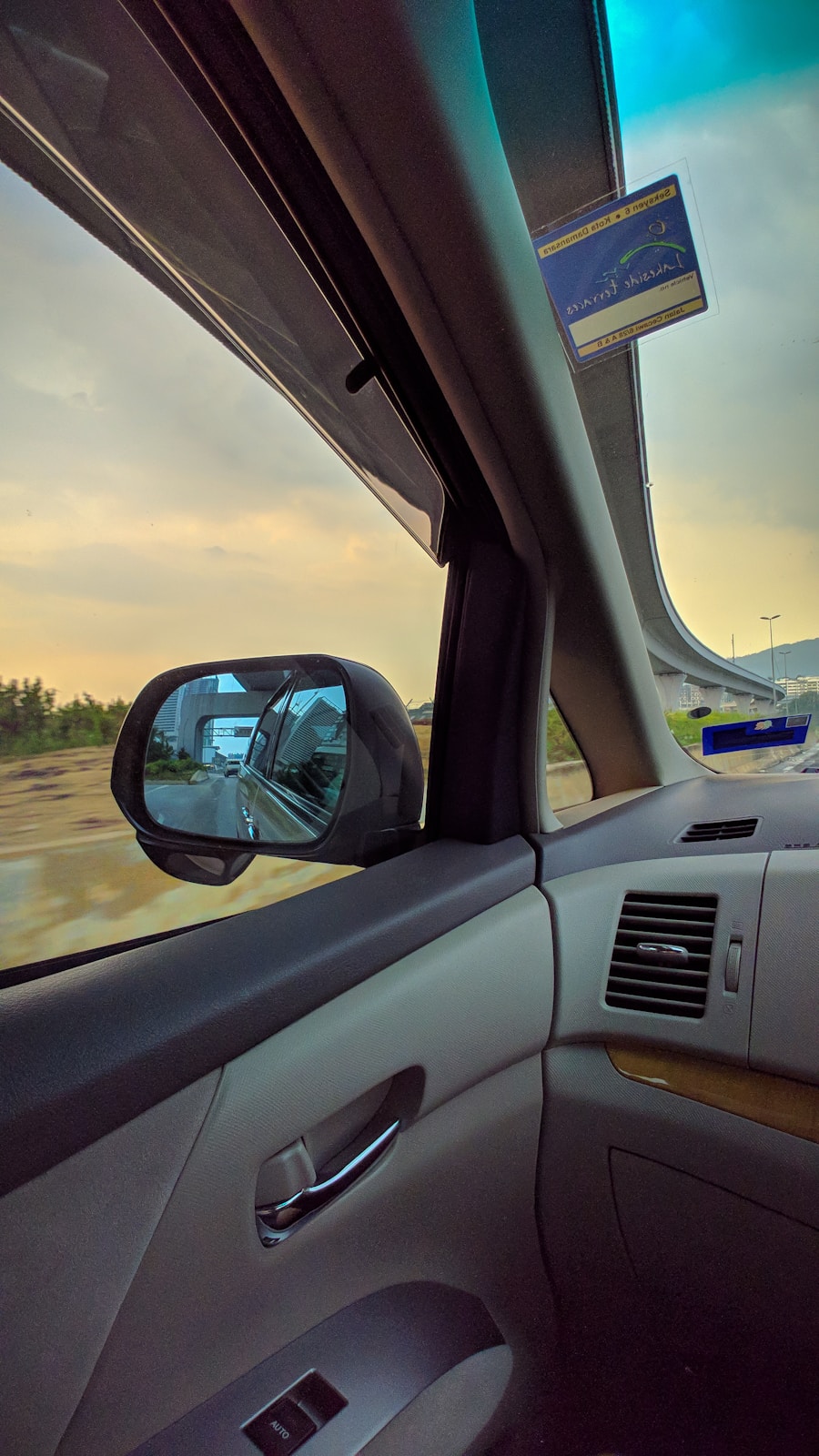Dashcams, or dashboard cameras, have emerged as a vital tool for drivers in recent years, gaining popularity due to their ability to record real-time footage of the road ahead. These compact devices, typically mounted on the windshield or dashboard, capture video and audio while a vehicle is in motion. The technology behind dashcams has evolved significantly, with many models now offering high-definition video quality, night vision capabilities, and even advanced features such as GPS tracking and collision detection.
As road safety becomes an increasing concern for both individual drivers and insurance companies, the role of dashcams in providing evidence and enhancing accountability has never been more critical. The rise of dashcams can be attributed to several factors, including the growing awareness of road safety issues and the increasing prevalence of fraudulent claims. In an age where every second counts, having a reliable eyewitness in the form of recorded footage can make a significant difference in the outcome of an accident.
Furthermore, as insurance companies seek to streamline their processes and reduce costs associated with claims, dashcams have become an attractive option for both insurers and policyholders alike. The integration of this technology into everyday driving not only enhances personal safety but also fosters a culture of responsibility on the roads.
Key Takeaways
- Dashcams are small cameras that can be mounted on a vehicle’s dashboard or windshield to record the road ahead.
- Dashcams provide valuable evidence in the event of accidents, helping to determine fault and prevent fraudulent claims.
- Dashcams can lead to quicker insurance claims processing by providing clear and reliable evidence of what happened in an accident.
- Insurance companies may offer reduced premiums to drivers who use dashcams, as they are seen as a proactive measure to improve safety on the road.
- Dashcams can also lead to improved driver behavior, as knowing they are being recorded can encourage drivers to be more cautious and responsible.
Dashcams and Accident Evidence
Objective Analysis of Accidents
This visual evidence can be invaluable in establishing liability, as it allows insurance adjusters and law enforcement to analyze the situation objectively. For instance, consider a scenario where a driver is involved in a rear-end collision. The driver who was hit may claim that they were stopped at a red light when the other vehicle struck them.
Clear Evidence for Informed Decisions
However, if the dashcam footage reveals that the driver was actually moving through the intersection when the collision occurred, it can significantly alter the outcome of the claim. This type of clear evidence not only aids in resolving disputes but also helps to expedite the claims process, as insurers can make informed decisions based on factual data rather than relying solely on witness statements.
Expedited Claims Process
By providing objective evidence, dashcams can help to streamline the claims process, reducing the time and resources required to resolve disputes. This can lead to faster settlements and a more efficient use of resources for all parties involved.
Dashcams and Fraud Prevention

Fraudulent claims are a persistent issue within the insurance industry, costing billions of dollars annually. Dashcams play a crucial role in combating this problem by providing concrete evidence that can deter dishonest behavior. For example, staged accidents—where individuals deliberately cause collisions to file false claims—can be effectively exposed through dashcam footage.
In many cases, these fraudulent schemes rely on the absence of reliable witnesses or evidence; however, with a dashcam recording every moment, perpetrators are less likely to succeed. Moreover, the presence of a dashcam can act as a deterrent for potential fraudsters.
Insurance companies have recognized this trend and are increasingly incentivizing policyholders to install dashcams in their vehicles as a proactive measure against fraud. By reducing the incidence of fraudulent claims, insurers can lower their overall costs and pass those savings on to honest policyholders.
Dashcams and Quick Insurance Claims Processing
| Insurance Company | Percentage of Quick Claims Processing with Dashcams | Percentage of Quick Claims Processing without Dashcams |
|---|---|---|
| ABC Insurance | 85% | 60% |
| XYZ Insurance | 90% | 55% |
| 123 Insurance | 80% | 50% |
The integration of dashcams into the insurance claims process has streamlined operations significantly. Traditionally, filing a claim could be a lengthy and cumbersome experience, often involving extensive paperwork and multiple interviews with witnesses. However, with dashcam footage readily available, insurers can quickly assess the circumstances surrounding an accident.
This efficiency not only benefits insurance companies but also provides peace of mind for drivers who want to resolve claims swiftly. For example, when a driver submits a claim accompanied by dashcam footage, insurers can immediately review the video to determine fault and assess damages. This rapid evaluation can lead to quicker settlements, allowing drivers to receive compensation for repairs or medical expenses without unnecessary delays.
In some cases, insurers may even be able to approve claims within hours rather than days or weeks, significantly improving customer satisfaction and trust in the insurance process.
Dashcams and Reduced Insurance Premiums
As dashcams become more prevalent among drivers, many insurance companies are beginning to offer discounts for policyholders who install these devices in their vehicles. The rationale behind this incentive is straightforward: drivers who use dashcams are often more responsible and cautious on the road. By encouraging safe driving behaviors through financial incentives, insurers can reduce their risk exposure and ultimately lower premiums for those who demonstrate responsible driving habits.
For instance, some insurance providers have implemented programs that reward drivers with reduced premiums for submitting dashcam footage that showcases safe driving practices. This not only encourages policyholders to adopt safer habits but also fosters a sense of accountability among drivers. As more individuals embrace this technology and demonstrate responsible driving behaviors, it could lead to a broader reduction in overall accident rates, benefiting both drivers and insurers alike.
Dashcams and Improved Driver Behavior

The presence of a dashcam can have a profound impact on driver behavior. Knowing that their actions are being recorded often encourages individuals to drive more responsibly and adhere to traffic laws. This heightened awareness can lead to safer driving practices, such as obeying speed limits, using turn signals appropriately, and maintaining safe following distances.
As drivers become more conscious of their behavior behind the wheel, it contributes to a culture of safety on the roads. Moreover, dashcams can serve as valuable tools for driver education. For new drivers or those looking to improve their skills, reviewing recorded footage can provide insights into areas where they may need to adjust their behavior.
For example, a driver might notice that they frequently engage in aggressive driving maneuvers or fail to check blind spots before changing lanes. By analyzing their own driving habits through recorded footage, individuals can make informed decisions about how to improve their skills and become safer drivers.
Dashcams and Protection Against Hit-and-Run Incidents
Hit-and-run accidents pose a significant challenge for victims seeking justice and compensation for damages incurred. In many cases, drivers flee the scene before any information can be exchanged or reported to authorities. Dashcams offer a crucial layer of protection against such incidents by capturing vital details about the other vehicle involved in the collision.
This information can include license plate numbers, make and model of the vehicle, and even facial recognition of the driver if they are visible in the footage. For example, if a driver is struck by another vehicle that subsequently flees the scene, having dashcam footage can provide law enforcement with essential evidence needed to track down the responsible party. This not only aids in recovering damages but also holds reckless drivers accountable for their actions.
The ability to document hit-and-run incidents through video evidence empowers victims and enhances their chances of receiving justice.
The Future of Dashcams in Insurance Claims
As technology continues to advance and road safety remains a priority for both drivers and insurers alike, the future of dashcams appears promising. With ongoing innovations in camera quality, data storage capabilities, and integration with other smart technologies in vehicles, dashcams are likely to become even more sophisticated tools for enhancing road safety and streamlining insurance processes. The growing acceptance of dashcams within the insurance industry reflects a shift towards data-driven decision-making that prioritizes transparency and accountability.
In addition to their role in accident documentation and fraud prevention, dashcams may evolve into comprehensive safety systems that provide real-time feedback on driving behavior or alert drivers to potential hazards on the road. As more individuals recognize the benefits of these devices—ranging from improved safety to reduced insurance premiums—the adoption rate is expected to rise significantly. Ultimately, as dashcams become an integral part of modern driving culture, they will continue to shape how we approach road safety and insurance claims in the years to come.
If you are interested in learning more about how to save money on your auto insurance, you should check out this informative article on Fairshot Financial. They provide valuable tips and advice on finding the best coverage for your needs while also saving money on premiums. By following their advice, you can ensure that you are adequately protected in the event of an accident while also keeping your insurance costs down.
FAQs
What is a dashcam?
A dashcam, or dashboard camera, is a small video camera that is mounted on the dashboard or windshield of a vehicle to record the road ahead while driving.
How does a dashcam help with insurance claims after an accident?
A dashcam can provide video evidence of the events leading up to and during a car accident, which can help determine who was at fault. This video evidence can be used to support an insurance claim and provide a clear picture of what happened.
Do insurance companies accept dashcam footage as evidence?
Many insurance companies do accept dashcam footage as evidence in the claims process. However, the acceptance of dashcam footage may vary depending on the insurance company and the specific circumstances of the accident.
Can having a dashcam affect insurance premiums?
Some insurance companies offer discounts to policyholders who have a dashcam installed in their vehicle. This is because dashcams can potentially reduce fraudulent claims and provide clear evidence in the event of an accident.
Are there any privacy concerns with using a dashcam?
The use of dashcams may raise privacy concerns, as they record video footage of public spaces and other individuals. It is important to be mindful of privacy laws and regulations when using a dashcam, and to use the footage responsibly.


